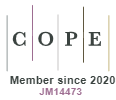Formatting
Formatting
- Pay attention to the language of the submission form; it must be in accordance with the language of your work.
- Manuscripts submitted to RIAE should be prepared following the style guidelines outlined in the Author Guidelines and submitted as a single Microsoft Word file (.doc or .docx).
- This file must contain all components of the manuscript, including title, abstract, and keywords (in Portuguese, English, and Spanish), excluding any information that could identify the author.
- Authorship information should be entered directly in the submission form - Manual - 4-step Submission.
- Text body alignment: 1.5 line spacing.
- Font size: Times New Roman 12 pt.
- Page layout should be A4 paper size (21 cm x 29.7 cm).
- Maximum manuscript length: 35 pages, including references, tables, figures, and appendices: a. Manuscripts that are excessively long may be returned to the authors for revisions prior to possible evaluation.
- Footnotes and endnotes: should be avoided: a. Footnotes or endnotes should be used sparingly and, if possible, avoided. In any case, authors should not use footnotes for including references or for discussions or presentations of concepts. In such cases, we encourage authors to evaluate whether the text is relevant and should be included in the body of the manuscript or if it is marginal and should be eliminated.
- Figures and tables: must be editable and placed in the manuscript where referenced; Low-resolution images will not be accepted.
- Indentation: Paragraphs should have a left indent of 1.25 cm.
- Pagination: All pages must be sequentially numbered, starting with page 1.
- Illustrations: figures, tables, charts, and others:
- must be editable and placed in the manuscript where referenced;
- must be numbered sequentially;
- must have a descriptive title at the top;
- the source must be indicated at the bottom, even if it is from the author(s).
14. Foreign words should be written in italics, while neologisms or uncommon meanings should be written in quotation marks.
15. Measurement units must follow the standards of the International System (SI), established by the International Bureau of Weights and Measures (BIPM) [www.bipm.org].
16. References: a. At the end of the article, a list of references cited in the text body should be presented, formatted in APA style; b. Electronic articles should include the DOI in an accessible format, i.e., with the prefix https://doi.org/ - or the URL; c. The references should be organized alphabetically; d. 1.5 cm spacing; e. When referencing multiple works by the same author in the same year, use a, b, c, etc., after the year to differentiate them, including in text citations; f. Do not use < >; g. Use APA formatting for references, as per the American Psychological Association guidelines. The website offers several examples of references.
17. Titles and subtitles: a. The main section titles should be bold and aligned to the left without numbering (see APA style); b. Secondary titles should be aligned to the left and in bold, and tertiary titles should be aligned to the left and in italics, all without numbering (see APA style).
Bibliographic Standard Adopted by RIAE
Citations and references must follow the American Psychological Association – APA style.


